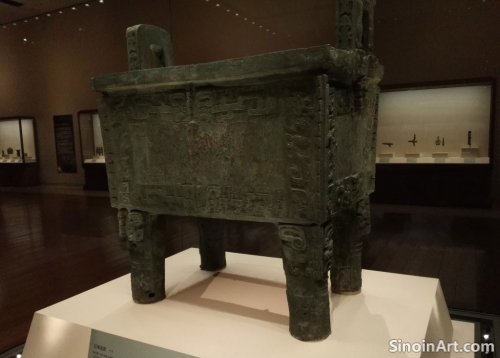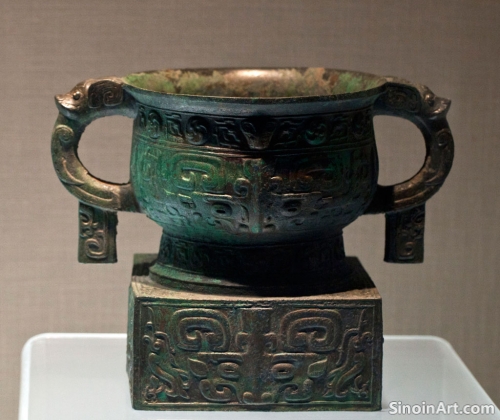Bronze Ware and Ancient Chinese Mythology: Exploring the Interplay Between Myth, Art, and Ritual
|
The use of mythological imagery on Chinese bronze ware was a powerful way of connecting these objects with the realm of the supernatural, with dragons, phoenixes, taotie, and other fantastic creatures becoming both recognizable symbols and also powerful tools for ritual and artistic expression. The interplay between the real and the imagined was a key element of ancient Chinese art, belief, and culture.  The integration of mythological beings into bronze designs helped to transform these objects into vehicles for communication with the gods, spirits, and ancestors, enhancing their power and their ability to access the spiritual realm. The use of these mythological figures helped to create a connection with both the natural and also the supernatural world. These symbols helped to establish a spiritual and powerful context for the use of these artifacts.  The use of these myths helped to transmit shared cultural beliefs, moral values, and cosmological understandings, and thereby reinforcing the cultural and spiritual life of the region, while also creating connections with the past. The stories depicted on these objects helped to shape and codify the values of the time.  The ongoing exploration and interpretation of the mythological imagery found on bronze ware continues to reveal new insights into the complex religious practices and belief systems of ancient China, providing a unique view into the minds and spirits of the people who created these objects. The symbols and mythology depicted on these pieces helps us to more fully understand the context of their original creation and use. |
Tag : bronze mythology, Chinese myths, mythical beasts, religious symbols, supernatural beings
Related information
- The Role of Bronze in Ancient Chinese Storytelling: Depictions of Myths and Legends
- The Use of Bronze in Ancient Chinese Water Management Systems: Irrigation and Hydraulic Engineering
- The Enduring Mystique of Chinese Bronze Ware: A Timeless Allure for Collectors and Scholars
- The Evolution of Bronze Vessel Forms in Ancient China: From Simplicity to Complexity and Back Again
- The Art of Bronze Casting: Techniques and Innovations in Ancient China
This article explores the role of bronze ware in ancient Chinese storytelling, highlighting how bronze objects depicted myths, legends, and heroic figures, and how they helped to preserve and transmit cultural narratives through a visual medium.
This article explores the use of bronze in ancient Chinese water management systems, highlighting its role in irrigation, hydraulic engineering, and the creation of tools and components that helped to control and manage water resources for agriculture.
This article reflects on the enduring allure of Chinese bronze ware, highlighting its appeal to both collectors and scholars, its timeless beauty, its historical significance, and its ability to inspire both fascination and the ongoing pursuit of knowledge.
This article explores the evolution of bronze vessel forms in ancient China, highlighting the shift from simple early shapes to more complex and ornate designs, and then later, a move back to simpler forms, reflecting changes in technology, aesthetics, and cultural practices.
This article explores the art of bronze casting in ancient China, highlighting the development of techniques like piece-mold casting and the lost-wax method, and emphasizing the control of alloys, temperature, and the innovations of ancient metalworkers.